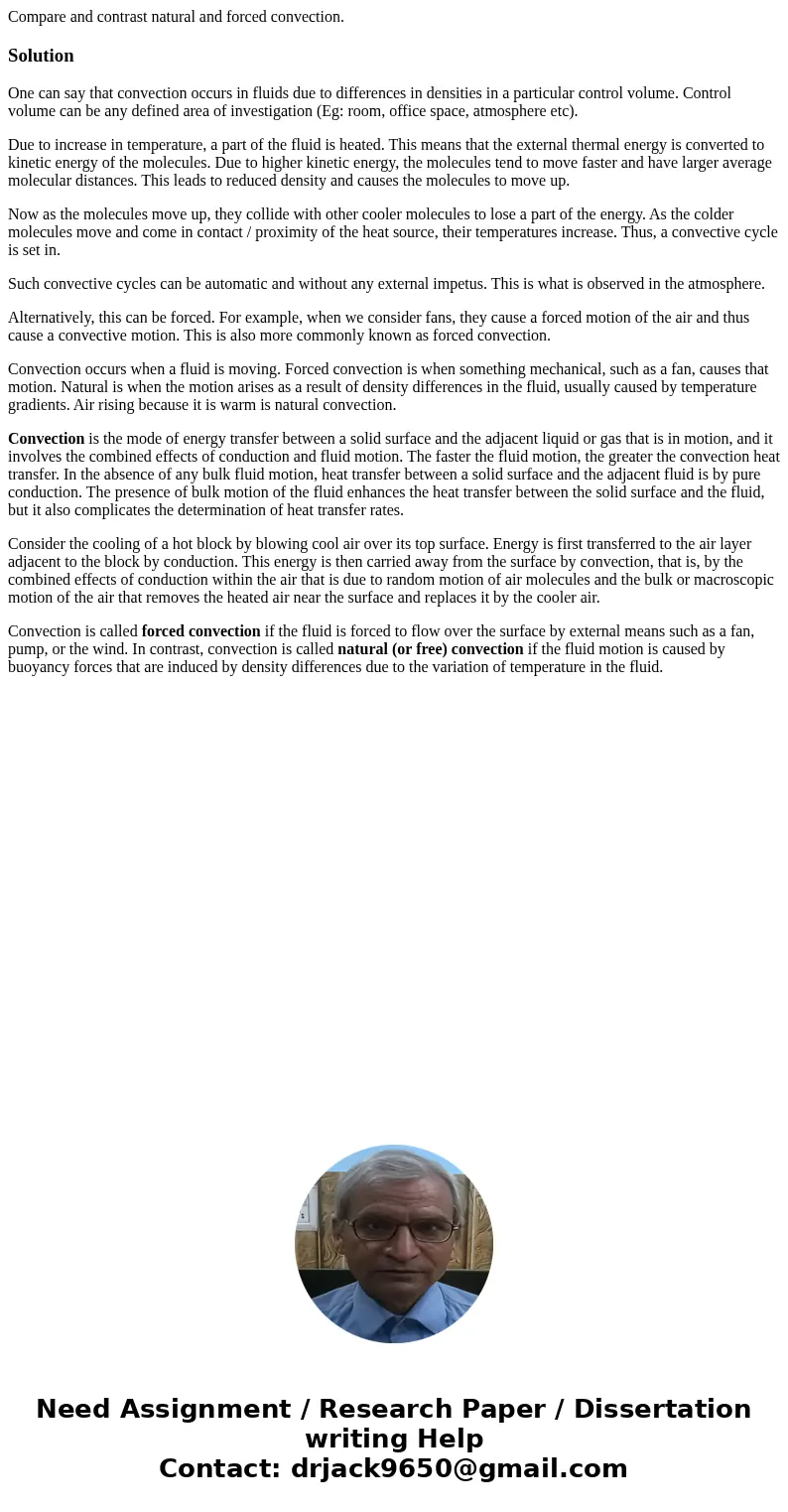Compare and contrast natural and forced convectionSolutionOn
Solution
One can say that convection occurs in fluids due to differences in densities in a particular control volume. Control volume can be any defined area of investigation (Eg: room, office space, atmosphere etc).
Due to increase in temperature, a part of the fluid is heated. This means that the external thermal energy is converted to kinetic energy of the molecules. Due to higher kinetic energy, the molecules tend to move faster and have larger average molecular distances. This leads to reduced density and causes the molecules to move up.
Now as the molecules move up, they collide with other cooler molecules to lose a part of the energy. As the colder molecules move and come in contact / proximity of the heat source, their temperatures increase. Thus, a convective cycle is set in.
Such convective cycles can be automatic and without any external impetus. This is what is observed in the atmosphere.
Alternatively, this can be forced. For example, when we consider fans, they cause a forced motion of the air and thus cause a convective motion. This is also more commonly known as forced convection.
Convection occurs when a fluid is moving. Forced convection is when something mechanical, such as a fan, causes that motion. Natural is when the motion arises as a result of density differences in the fluid, usually caused by temperature gradients. Air rising because it is warm is natural convection.
Convection is the mode of energy transfer between a solid surface and the adjacent liquid or gas that is in motion, and it involves the combined effects of conduction and fluid motion. The faster the fluid motion, the greater the convection heat transfer. In the absence of any bulk fluid motion, heat transfer between a solid surface and the adjacent fluid is by pure conduction. The presence of bulk motion of the fluid enhances the heat transfer between the solid surface and the fluid, but it also complicates the determination of heat transfer rates.
Consider the cooling of a hot block by blowing cool air over its top surface. Energy is first transferred to the air layer adjacent to the block by conduction. This energy is then carried away from the surface by convection, that is, by the combined effects of conduction within the air that is due to random motion of air molecules and the bulk or macroscopic motion of the air that removes the heated air near the surface and replaces it by the cooler air.
Convection is called forced convection if the fluid is forced to flow over the surface by external means such as a fan, pump, or the wind. In contrast, convection is called natural (or free) convection if the fluid motion is caused by buoyancy forces that are induced by density differences due to the variation of temperature in the fluid.

 Homework Sourse
Homework Sourse